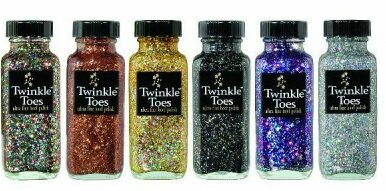There is some controversy over the topics of horse hoof polish and dressing! If you start showing your horse, you’re definitely likely to come across various viewpoints about these products.
In this article, I’m going over what I think about them and when I would and would NOT use them. I’ve learned some interesting stuff and I think that if you read this, you might be surprised. It might help you develop an opinion on the matter of your own, too.
Is it okay to paint your horse’s hooves with polish? (Matching manicures, anyone!?) What are the potential pros and cons to using hoof dressing? We’re going to get all of your questions answered in this post!

Polish vs. Dressing: What’s the Difference?
If you’re new to the subject, you might be wondering: what’s the difference between polish and dressing, anyway? You might even be wondering if dressing is some weird wrap that you can put on the horse’s hoof.
What is Horse Hoof Dressing?
Hoof dressing is essentially an oily or creamy product that many people use on their horse’s hooves. It’s kind of like a lotion. It is meant to improve hoof health, prevent dryness, reduce the risk of cracking (or even treat cracking), and even prevent lameness in the long-term.
Dressing can either be bought in stores, online, or made at home. You can check out YouTube for plenty of D.I.Y. formulas on how to make at-home dressing solutions. BUT before you do, keep reading for a bit longer because you may change your mind.

What is Horse Hoof Polish?
Hoof polish is mostly a liquid solution that is used on horse hooves after grooming and cleaning. There are many benefits of a horse hoof polish. Some of these benefits are:
- It can help to improve the moisture content in your horse’s hooves.
- It can help prevent cracks in your horse’s hooves.
- It can help prevent your horse from developing tender feet and losing shoes.
- And it looks amazing!
People use horse hoof polish for different purposes, but mostly because it looks good. Most of the time, it is used to give a finishing touch to grooming. People use it on their horse’s hooves before going to shows, competitions, breed shows, and other events.
Hoof polish is actually a lot like nail polish. Although it can provide some benefit to hoof health (as listed above), it’s primarily meant to give your horse’s hoof a finishing touch that’s purely aesthetic.
During shows, black polish will generally be used to make the hooves shiny and stand out. Sometimes you can also buy an additional spray that coats the base polish and adds even more shine.
There are many types of hoof polishes. Some are clear, some are black colored, and some polishes even have glitter in them. Most of the time, it is preferred to use a polish that matches the color of your horse’s hooves. For example, if your horse has white hooves then you should use a clear hoof polish. On the other hand, if the color of your horse hooves is black, it is preferred to use a black-colored hoof polish.
Here is a quick video on how you can polish a hoof:
Now that you know the difference between hood polish and dressing, let’s talk about the controversy surrounding horse hoof dressings.
Should I Use Dressing for Regular Hoof Maintenance?
According to research published on TheHorse.com, hoof dressings can actually have a negative effect on hooves, particularly those hooves that are already damaged or otherwise vulnerable.
Certain ingredients like formalin, tar-based formulas, and some solvents can actually cause cracking, as opposed to repairing it. They can actually do greater damage to poorer-quality hooves.
Essentially you’re making the problem worse, which is not what you want!
Some products do increase the moisture content in your horse’s hoof, as they claim. But that’s not always a good thing. Increased moisture within the hoof over a prolonged period can also cause damage to the hoof wall. (Here is some more information about potential hoof problems and how to care for your horse’s hooves over a long period of time.)
Instead of using dressings, you can maintain the health of your horse’s hooves by regularly picking them as part of the grooming process.

You should also have them seen by a farrier frequently, for hoof trimming and to shoe them. Regularly mucking out their stables will also help, as mud and waste can damage the hoof structure.
TL;DR: Many horse hoof dressings can do more damage than good. Rather than using dressing, you should develop a healthy grooming regimen in order to keep your horse’s hooves healthy and prevent any potential damage.
How Should I Prepare for a Show with Horse Hoof Polish?
Now let’s get back to polish. Polish is generally a lot safer to use on hooves because it’s more like a lacquer… It doesn’t penetrate the horse’s hoof so deeply and cause an increase in moisture.
With that settled, we can talk about the hoof polish you could be using to show your horse.
The most common polish “colors” are actually just clear and black. They’re not intended to be too showy, but rather just provide a finished look for your horse’s hooves.
In English competitions like show jumping, hunter, and dressage, clear polish is generally favored. Meanwhile, for Western competitions (especially Western pleasure), you’ll want black hoof polish. Do note though that some competitions or even breeds ban the wearing of polish that alters the natural hoof color. So watch out for that!
Now for the Fun Stuff…
But just because competitions call for clear and black polish doesn’t mean that you can’t break out and do something fun. And to me, nothing is more fun than glitter!
I love glittery nail polish myself. And what could be cuter than giving my horse glittery hooves to match?!
That’s where “Twinkle Toes” horse hoof polish with GLITTER comes in!

I think my favorite is this gold, but you can get it in a whole range of colors. So what’s stopping you? It could be a great Christmas present, either for you or for your horse!
Shop Twinkle Toes Glitter Hoof Polish
Can You Put Regular Nail Polish on a Horse’s Hooves?
Can you use regular human nail polish on your horse’s hooves? While most wouldn’t recommend you do this regularly, painting your horse’s hooves with regular nail polish every once in a while shouldn’t hurt them.
Just make sure you apply the nail polish carefully, waiting for each layer to dry between coats, just like you would when applying polish to your own nails. You’ll only want to paint your horse’s hooves if they are healthy, though. As always, consult your veterinarian and/or farrier if you’re in doubt!
Just Like For Your Nails, Diet is Important for Hoof Health
Now, if you’re still a little worried about the health of your horse’s hooves, I do have one more suggestion for you.
In addition to your normal grooming, mucking and farrier work, you can also help treat any hoof problems through your horse’s diet.

Horse hoof health is determined by a number of key nutrients: proteins, fats, zinc, calcium, phosphorous, vitamin e, and selenium. Biotin, a member of the vitamin B family, has also been shown to have positive effects on hoof health.
Generally, I would recommend trying Health-E Vitamin E to start with. These will also have great benefits for your horse’s joints and coat!
More generally, you can check out our horse healthcare and supplements page for more information about how you can best serve your horse’s health.
Conclusion
I hope you enjoyed this post! Horse hoof polish can be lots of fun when done properly.
If you have any remaining questions about horse hoof polish and health, let me know in the comments below.
Happy riding!
Martina

